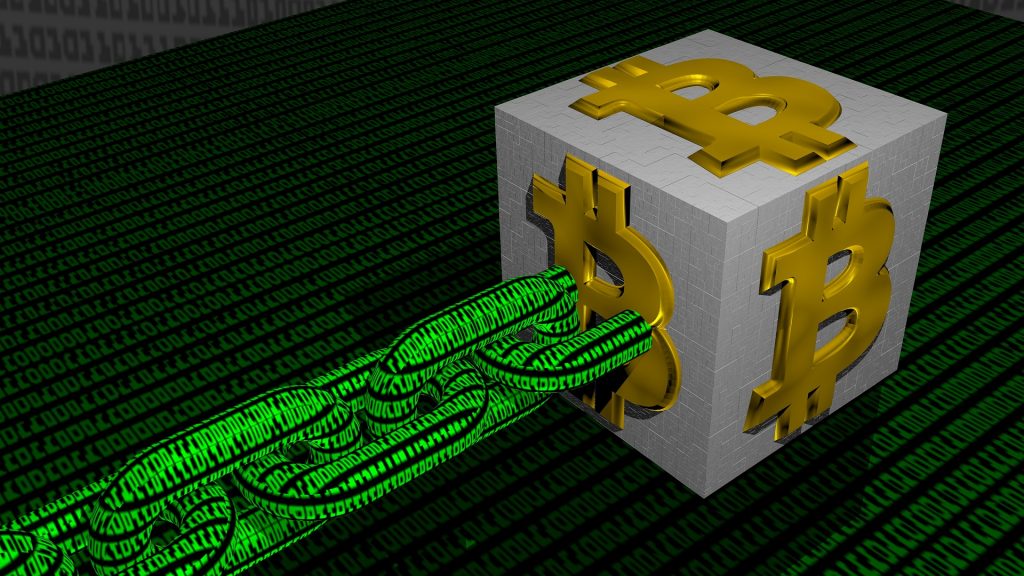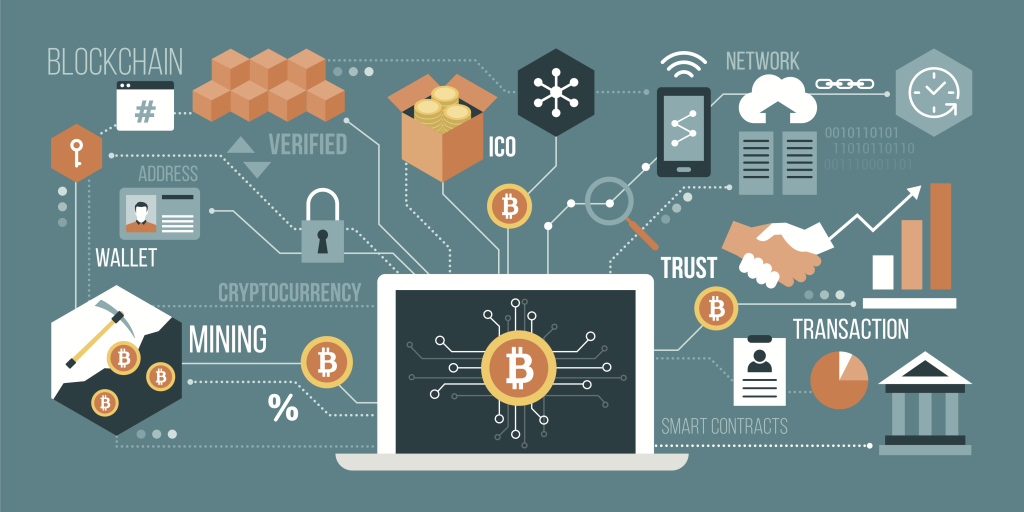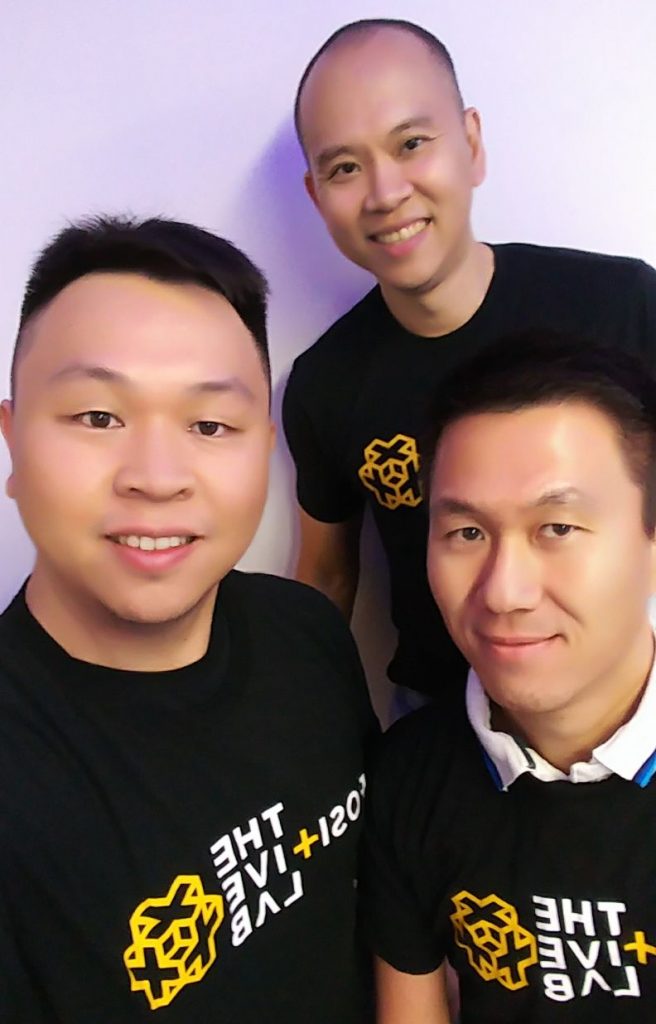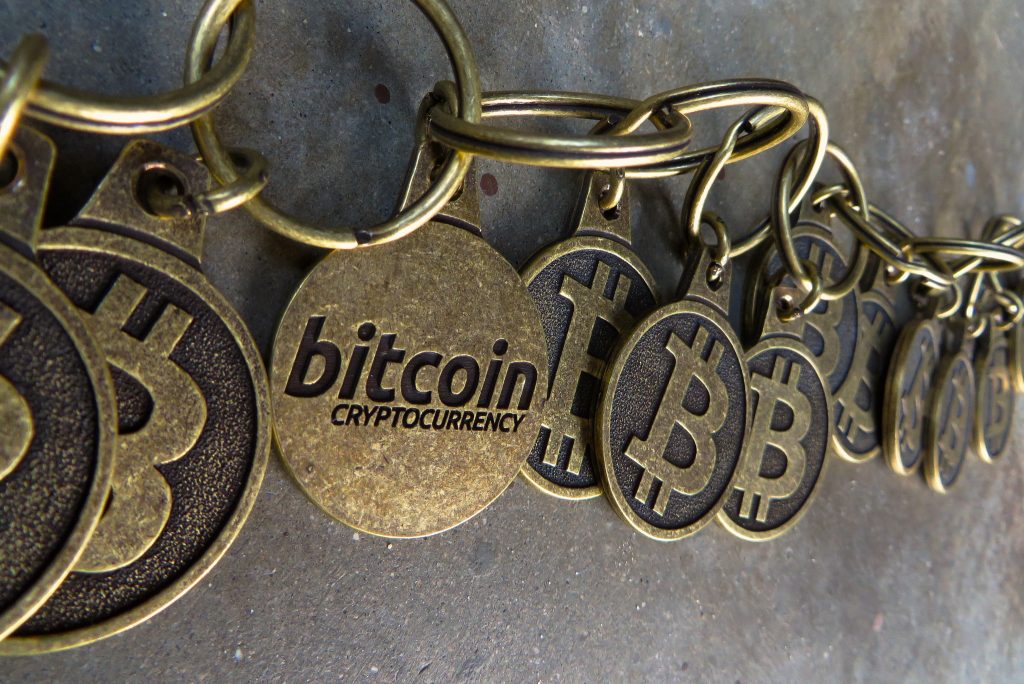By David Wong, Freddy Setiawan and Alvin Yong
By now, most people are aware of Bitcoin and its meteoric rise in value. What is less known, however, is its underpinning technology, blockchain. Blockchain is a distributed ledger that records virtually all types of transactions. This distributed nature is reflected in its physical architecture, and is one of the main reasons for its strong resistance to hacking and its immutable nature.
CHARACTERISTICS OF BLOCKCHAIN |
BENEFIT |
| Distributed | Multiple nodes of computer hashing power make up the blockchain network; hacking this network requires one to effectively hack 51% of the blockchain’s computing power which would take considerable effort even from large-scale governments |
| Immutable | Transactions made on the blockchain cannot be edited and are permanently stored for the lifetime of the blockchain |
| Transparent | Once a transaction is made on the blockchain, it is open for everyone to see |
| Automated contracts | Transactions are contract-driven and assets are transferred via programme once conditions are validated |
Our Blockchain Story: Some Background

In 2017, we founded The Positive Lab in response to one of the 100 problem statements published in the Global Fintech Hackcelerator competition, the centrepiece of the Singapore Fintech Festival 2017. In Singapore's schools, students pay for their meals or stationery needs in cash. This means that parents have to give their children daily or weekly cash allowances for all school-based transactions. Recognising this fact, we wanted to introduce a cashless school system that would let parents monitor their kids' expenditures and even dietary habits.
The solution, named Smarty Wallet, was devised to enable payments through NFC (Near Field Communication) technology and mobile devices. By leveraging student passes which were CEPAS cards with embedded NFC chips, they could then be read by mobile devices. Each student would be assigned a digital wallet, whose address would be assigned to their student passes. The value behind those wallets would be stored in a central database and the Ethereum blockchain. All transactions involving those wallets would involve recording of said transactions on the blockchain. The traditional stored value card approach was ruled out mainly due to negligence. Given younger students' tendency to misplace their belongings, we wanted to minimise the impact of loss. Students merely had to replace their cards, thereby voiding the validity of their old cards and retaining the old card’s previous value.
Why We Chose Blockchain

Blockchain as a technology is still extremely new: people are still learning how to use it and what its limitations are. We saw it as a challenge to apply the benefits of the blockchain to real world problems. Specifically, we recognised the huge value behind its ability to establish trust and cut out middlemen overheads. Transactions recorded on a blockchain are immutable and transparent. By recording transactions across the numerous nodes in a blockchain, hacking a transaction is made impractical through the sheer amount of computing effort needed to subvert the transaction. Most cashless solutions out in the market involve credit cards and, by extension, a surcharge levied on credit card transactions. Our goal was to eliminate this levy as well as remove the surcharges that would be passed on to the consumers. While we deemed Smarty Wallet suitable for Singapore, we also saw potential for it to be successful in developing countries, because of its ability to:
-
Create digital tokens for students that do not store actual value and consequently remove the harsh penalties of losing stored value cards
-
Reduce the likelihood of bullying amongst the student body by introducing a cashless payment system
-
Remove the need to pay via mobile phones as is commonly seen in developed economies, e.g., PayNow in Singapore, ApplePay, etc.
-
Allow merchants to use cheap tablets as point-of-sales systems to facilitate transactions
-
Remove the need for merchants to carry around considerable amounts of cash
-
Eliminate the need for merchants to travel to banks if they operate in less accessible venues
-
Reduce the cost of audits of merchants by making transactions transparent in the blockchain
Additionally, we envisioned an entire ecosystem in which children and educational institutions stood to benefit from the blockchain. For the kids, we envisioned schools where payments could be made through the blockchain for fees, supplies, canteen meals and even toys (through school–toy store tie-ups). We also sought to utilise the blockchain to store academic records and transcripts of students, thereby establishing authenticity and providing branding for the schools.
Chain Reactions: Lessons from Smarty Wallet's Pilot

After we piloted our solution, it never went live for a number of reasons. If we were to handle money on behalf of others under the Finance Companies Act, we needed to obtain licensing from the Monetary Authority of Singapore. This proved tricky as we had not yet built a business model that was sustainable. Doing our sums, we projected that our costs would eventually outstrip our revenue unless we could scale out our solution significantly. We were however in an unfortunate chicken-or-egg situation in which we needed schools' buy-in to scale out, but being untested, it was difficult to get their buy-in in the first place.
Additionally it did not help that around this time, POSB launched its Smart Buddy cashless payment solution for schools. Even though their solution was not built on blockchain, it still retained a lot of the benefits of our Smarty Wallet solution, and we were unable to compete against the bank's established branding and market presence. In hindsight, even though Smarty Wallet did not take off, we gained many valuable insights from the experience. First, the selection process of the blockchain taught us the features we should be looking for in a blockchain technology: performance (transactions per second) and ease of writing distributed apps on top of the blockchain. Second, we learned about the issues facing start-ups when trying to implement a mobile payment system. Finally, we became much more aware of the cost of transacting through the blockchain.
The performance of a blockchain and its receptiveness for developers to leverage its capabilities were major considerations. We chose the Ethereum network as it allowed us to develop quickly through Solidity, its native language, but even that was not sufficient to overcome performance limitations. To give some context, the bitcoin blockchain has a throughput of three to seven transactions per second, and ethereum has a much higher throughput of roughly 15 transactions per second.
Nonetheless, this is a limiting factor for situations that have extremely high volumes of transactions. Additionally, we learned about factors that hinder the successful implementation of a mobile payment platform. These include:
-
Limited market potential
-
Limited openness to other providers/partners
-
Limited potential for other external users to join this payment platform
Without going into too much detail on each point, we were looking at a limited market with a platform that did not allow us to bring on external providers and users. In short, no matter how great the technology, creating a successful solution requires a supportive ecosystem to help drive adoption. What we had built, on the other hand, was a closed ecosystem that did not allow integration with other school administration systems such as LittleLives, and it would take considerable effort to integrate with the cornucopia of external payment platforms.
Through the Smarty Wallet pilot, we also learned about the cost of transacting through the blockchain. As mentioned earlier, the blockchain comprises computing nodes that contribute hashing or computing power. In order to attract people to set up nodes to support this network, an incentive is offered as transactions consume their time, electricity and hardware. This incentive is realised in terms of a transaction fee. Every transaction levies a fee, and sending cryptocurrency through the blockchain will thus result in a cut being taken by participating nodes—this cut is generally a fraction of the transaction cost. For us, this meant having to build the transaction fee into our business model and liaising with the participants in our application ecosystem (merchants) to establish buy-in.
A Warning: Blockchain ≠ Cryptocurrency
At this point, we should also mention the dangers associated with the blockchain, since the average person will often mix up cryptocurrency and blockchain.
It’s clear that cryptocurrency has emerged to become a force in the financial world: more countries are now looking at cryptocurrency and working out how to build a framework to regulate it. The value of cryptocurrency has gone from virtually nothing in early 2010 to climbing to its peak at just short of US$18,000 in December 2017. It is presently hovering around US$6,300, though its value is still fluctuating significantly according to news and people’s sentiments.
The blockchain itself is merely a technology medium used to conduct transactions and it has little bearing on the value of cryptocurrency. Where the danger lies is in the unregulated environment in which cryptocurrencies are transacted, and where their values rise and fall with abandon merely because of news or pumping and dumping activities of big investors called "whales". Of late, many have jumped on the cryptocurrency bandwagon, and while some have made a fortune, others have ended up on the losing end. There is little in the way of technical analysis that can be applied to cryptocurrencies unlike stocks, and uninformed speculation is perilous.
Chained to the Future

To summarise our findings, we see that the blockchain technology is new, exciting and filled with promise. At present, some sectors are already turning to it as a way to eliminate middlemen costs and reduce overheads. For instance, many non-profit organisations employ blockchain technology to ensure direct transactions between donors and beneficiaries. The transparency afforded by blockchain has been particularly reassuring for those who are sceptical about how NPOs collect and allocate donations.
However, in terms of implementation, we are still several years away from seeing mainstream adoption of blockchain-based solutions. This is because blockchain is still viewed as being intrinsically tied to cryptocurrency, and we are unlikely to see much progress until proper regulations are in place. Without regulations, transacting on the blockchain becomes improbable due to extremely high transaction costs, à la bitcoin. But with regulations established, people will develop more faith in blockchain, and only then will we start to see regular transactions through cryptocurrency and increased adoption of blockchain-based solutions.
Since Smarty Wallet, we have most recently developed the test net for the Neo blockchain. Neo, another cryptocurrency that originated from China, has a large community following that is actively working towards evolving the technology and encouraging its adoption. However, while Neo is the cryptocurrency, transactions are paid using GAS, a commodity that is generated by holding NEO over time. The idea behind GAS is to separate the transaction value from the transaction fee, thus ensuring that a cut is not taken out from the transaction value. We have thus built a test environment that the entire community can utilise to build and test their decentralised apps on top of the Neo blockchain. This will enable greater uptake of the Neo blockchain to drive application development and nurture a thriving tech community.
The future for blockchain-based solutions is promising, and we are excited to be a part of it.
 |
David Wong, Freddy Setiawan and Alvin Yong are colleagues and friends working with technology. David has more than 20 years of experience in large-scale data analytics projects across different industries from telecommunication, banking and finance to media. He also makes important life decisions through data—from picking the right stocks to choosing the right schools for his children, to even the pace he should run in a marathon. Technology is Freddy's middle name: he loves building prototypes and exchanging ideas with the global "geek" community. He eats, sleeps and breathes "tech", even making it a point to set aside at least an hour a day to write at least ten lines of codes. Living in the era of digital transformation excites Freddy most. As a fan of Elon Musk, he believes in building workable tech solutions to solve real-life problems and make the world a better place. A dreamer at heart, Alvin's love for sci-fi and fantasy novels, Star Wars, Blade Runner and Blizzard games has shaped his vision of a world where technology is an integral part of our everyday lives. The father of an energetic two-year-old boy, he is part-geek and part-athlete, with a strong interest in building applications as well as training to be powerlifter. His current goal is simple: build the next unicorn! |









Comments